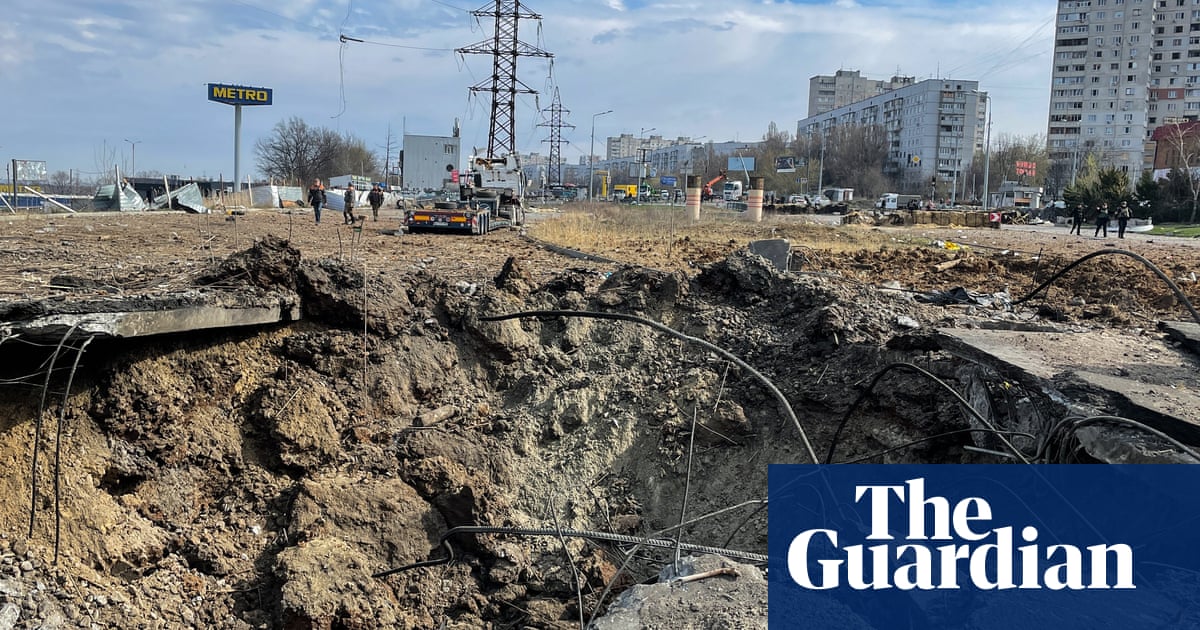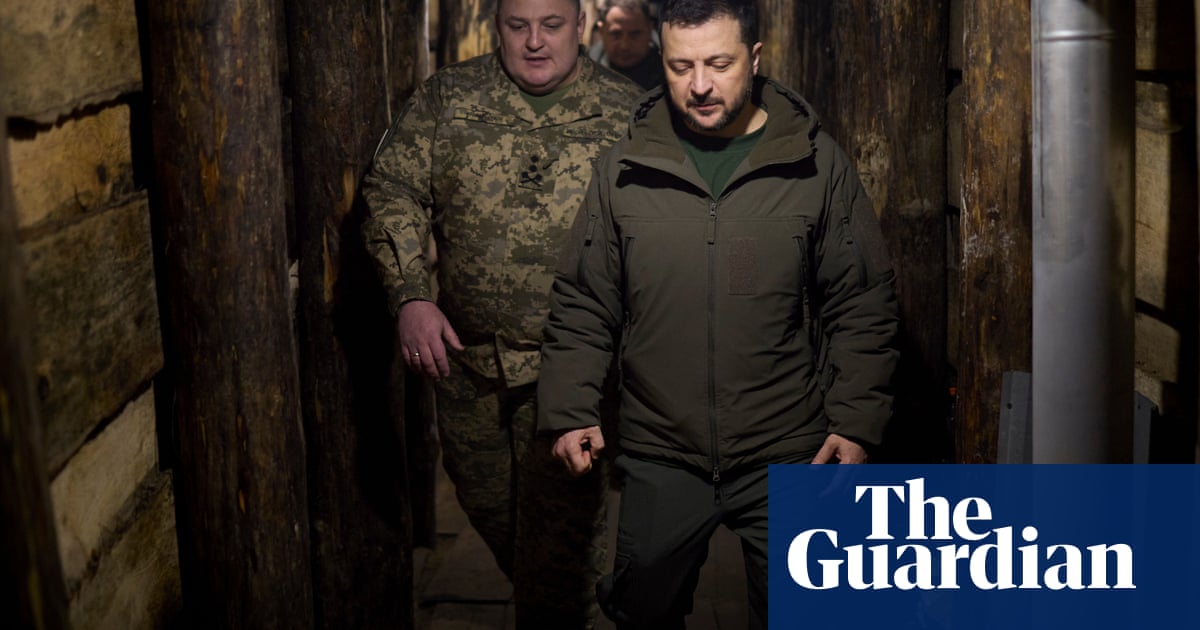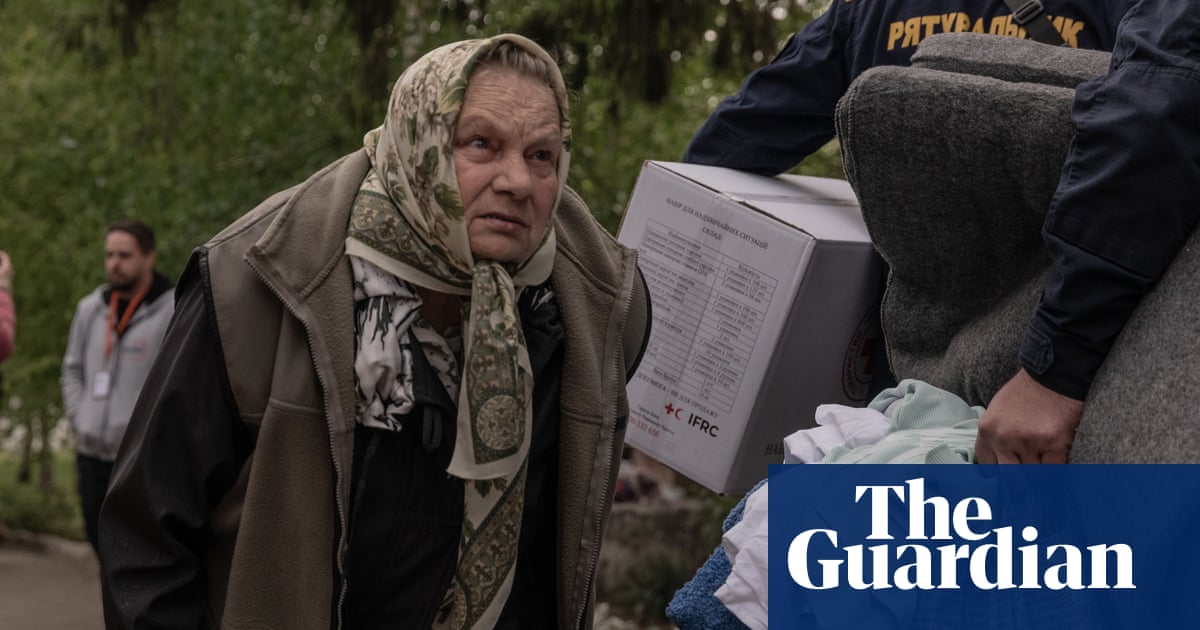
Russian forces launched an armoured ground attack on Friday near Ukraine’s second city of Kharkiv in the north-east, Dan Sabbagh and Andrew Roth report. There were also reports of fighting in the border villages of Strilecha, Pylna and Borysivka farther west, and that Russian forces had advanced by about 1km around the border town of Vovchansk. Volodomyr Zelenskiy, Ukraine’s president, said from Kyiv: “Russia launched a new wave of counteroffensive actions in this area. Ukraine met them there with our troops, brigades and artillery ... Now there is a fierce battle under way.” Ukraine’s military said it had deployed more troops and Zelensky said Ukrainian forces were using artillery and drones against the Russian advance.
Residents of Vovchansk were evacuated on Friday, Reuters reported from the area. “We are leaving because we are dying from the ‘Russian world’,” said Valerii Dubskyi, 60, referring to a Russian concept of extending Russia’s influence beyond its borders. “It can go to hell, together with Putin and their authorities. They are our enemies. They tested all types of weapons on us, except for the nuclear bomb.”
A senior Ukrainian military source who declined to be named said Russian forces were aiming to push Ukrainian troops as far back as 10km (6.2 miles) as part of an effort to create a buffer zone, but defenders were trying to hold them back.
At least two civilians were killed and five more injured during heavy Russian shelling of border settlements, said Oleh Syniehubov, governor of Kharkiv region. “All the enemy can do is to attack in certain small groups, you can call them sabotage and reconnaissance groups or something else, and test the positions of our military,” he said.
Late on Friday, the US announced a new $400m package of military aid, including rockets, surface-to-air missiles and armoured vehicles. White House national security spokesman John Kirby said the aid was intended, in part, to help Ukraine fend off the Russian assault on Kharkiv. “It is possible that Russia will make further advances in the coming weeks, but we do not anticipate any major breakthroughs,” Kirby said. “And over time, the influx of US assistance will enable Ukraine to withstand these attacks over the course of 2024.”
Kirby said: “It is certainly possible that the Russians are setting themselves up for a larger assault on Kharkiv,” adding it was concerning that Russia appeared to be preparing to bring long-range fire capabilities within range of Kharkiv. “You’re not going to do that if you’re not also thinking about some other larger assault directly on the city.”
A Ukrainian strike late on Friday blew up an oil storage depot in the Russian-occupied Luhansk region and killed three people, officials of the Russian regime there said. Videos and photographs of the burning refinery at Rovenki were posted online by open-source bloggers and Telegram channels, as well as by Leonid Pasechnik, head of the non-existent Luhansk People’s Republic.
A Ukrainian drone attack set an oil refinery in Russia’s Kaluga region on fire, RIA state news agency reported on Friday, citing emergency services sources. RIA reported that three containers with diesel fuel and one with fuel oil were consumed by the fire at the Pervyi Zavod refinery.
On Thursday, a Ukrainian attack drone set a record by flying 1,500km (932 miles) to successfully strike an oil refinery 1,200km (746 miles) inside Russia in Bashkortostan, a Ukrainian military source said. Ukraine’s internal security agency, the SBU, was credited with having carried out the operation. The source said it proved Ukraine had “powerful technological solutions that help deliver painful blows to the enemy. This means that Russian refineries and oil depots operating serving the war machine cannot feel safe even in the deep rear.” The target was the Gazprom Naftokhim Salavat refinery, one of the largest in Russia.
Ukraine expects the first F-16 fighter jets to be delivered in June or July, a senior Ukrainian military source has told Reuters.












